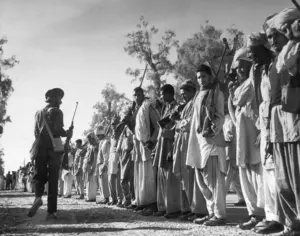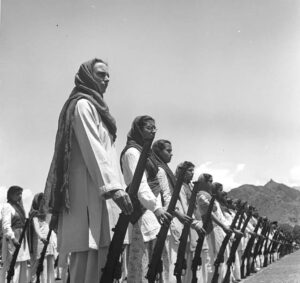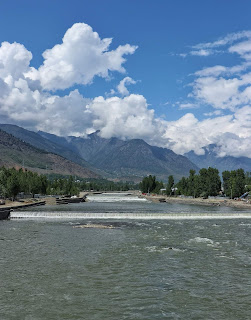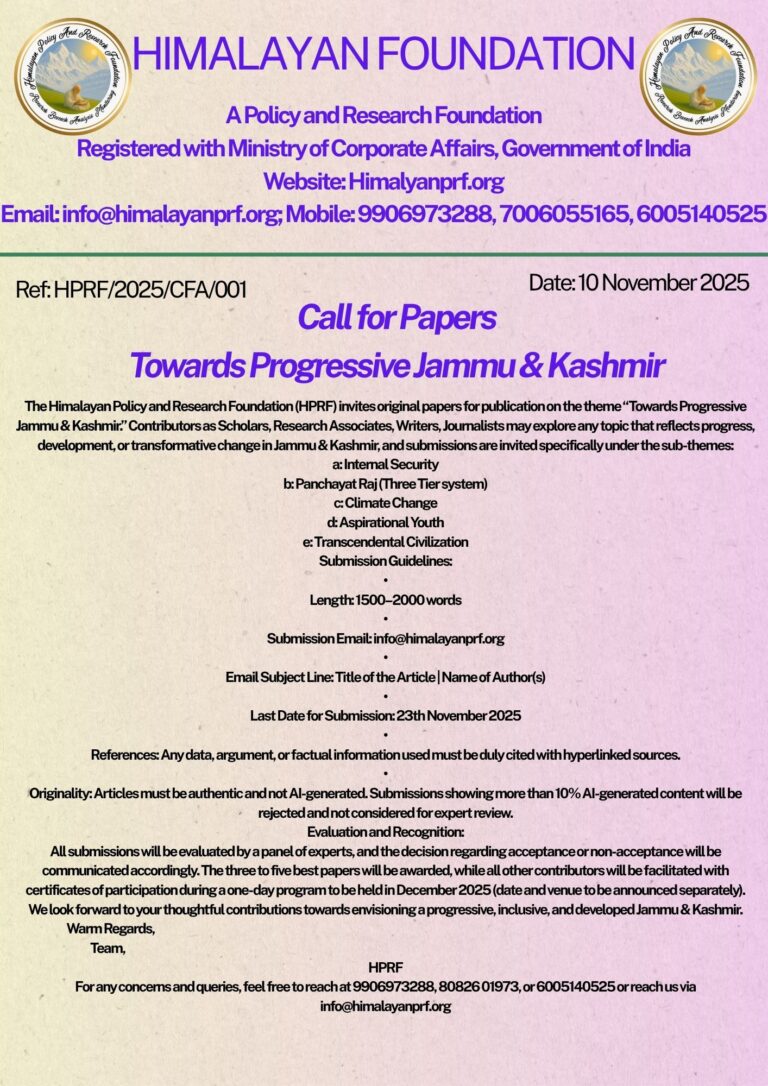Written By : Peerzada Muneer
In the luminous fold of the Himalayas, where the earth lifts itself in longing toward the divine, lie stories carved not by ink, but by wind, stone, and water. These mountains, ancient beyond time and silent with the weight of gods, do not merely occupy geography—they occupy meaning. They are not landscape; they are scripture. In their vast breath, the rishis found truth. In their hidden wombs, the devas found refuge. And from their icy soul, rivers are born—not as mere channels of water, but as living hymns, carrying the essence of the sacred down to the mortal world.
Among these rivers, a delicate yet profound stream flows—a daughter of Harmukh, a whisper of the eternal Himalaya. Her name is Madhumati. Sweet in sound, sacred in sense, and secretive in spirit, Madhumati is more than water—she is memory, myth, and meditation.
Born from the glacial breath of Gangsar, a high-altitude lake cradled in the arms of Mount Harmukh, Madhumati comes into being as a prayer does—from stillness into song. She springs to life alongside the Arin stream, nourished by the waters of Nilsar and Bonar, her clarity reflecting the spiritual purity of her Himalayan source. From her birth, she carries not just snowmelt but a philosophy—a way of being that mirrors the Himalayan ideal: ascetic yet nourishing, still yet in motion, remote yet intimately present in the life of the people she touches.
As she descends from the sacred heights, Madhumati breathes life into the valley like a benediction. The earth, softened by her touch, opens in quiet gratitude. From her upper course, she releases three tributaries, like strands of divine mercy, fanning across the land to awaken fields, nourish roots, and sustain the rhythms of life. At the foot of Harmukh, she branches once more—gracefully, generously—sending her waters to far-flung corners of the valley before surrendering herself to the vast and ancient womb of Wular Lake, where her journey dissolves into silence, yet never into absence.
But to speak of Madhumati in terms of irrigation and geography alone is to miss the river’s soul. Her current flows not just through land, but through legend. Kalhana, in his timeless Rajatarangini, mentions this sacred stream as the site of early civilization. It was beside her banks that Dhanya, a general of King Bhoja’s lineage, settled troops and sowed the seeds of what would become Bandipora. Long before maps, long before nationhood, there was water—and in water, there was identity.
The Nilamata Purāṇa, Kashmir’s sacred cosmology, does not whisper but sings of Madhumati’s sanctity. To bathe at her source, it promises, is to be cleansed of all sins and to be honoured in the realm of Rudra. Her water is not only pleasant to the tongue, but purifying to the soul. Even today, her murmurs carry the echo of mantras, and those who listen closely, with reverence rather than noise, can hear the Himalayas speaking through her.
For in truth, Madhumati is not separate from the Himalayas. She is their daughter, their expression, their flowing thought. In the Upanishadic sense, she is manomaya—mind-made—both physically carved by the mountain and conceptually conceived by it. Like a mantra descending from the lips of a sage, she emerges from that white silence into a world of form and color, carrying the sanctity of the heights to the plains below. The Himalayas, in their philosophical essence, are the union of stillness and power, the marriage of austerity and fertility. Madhumati embodies this union. She is the kinetic meditation of the mountains—a river that moves yet meditates, flows yet remains unchanged in spirit.
The mystics who wandered through Kashmir’s valleys often spoke of rivers as metaphors for the divine path. To the Sufis, water is tawajjuh, the focused gaze of the Beloved flowing into the seeker’s soul. Madhumati, with her unseen origin and visible blessings, becomes a symbol of divine effulgence—tajalli. Her ripples reflect the states of the Sufi traveler: from the icy austerity of fanā (annihilation of self) to the warm embrace of baqā (abiding in God). The song of her waters is a zikr, a repetition of the name of the Real in every drop. To walk beside her, then, is not merely to stroll—it is to whirl inwardly, like the dervish, in search of truth.
And thus it is no wonder that in the soul of Bandipora, a town nestled in her nurturing arms, Madhumati forms the core of its cultural trinity: Ilm, Adab, and Aab—knowledge, grace, and water. If Ilm is the light of learning and Adab the manner in which it is worn, then Aab is the very spirit that sustains them both. And Madhumati is that Aab—pure, ancient, indispensable. Her waters not only irrigate the crops of the land but also irrigate the memory and manners of a people. She is the reason Bandipora speaks softly yet thinks deeply, sings quietly yet feels profoundly.
Despite all this, in our times, she has been renamed, diminished in the modern lexicon as merely a nallah, a drainage, a utilitarian channel. Such naming is not innocent—it is erasure. To strip her of her name is to forget our own. For in forgetting Madhumati, we forget what the river once meant to be: a bridge between mountain and man, between the divine and the daily, between the eternal snow and the temporary self.
To remember her now is not an act of nostalgia. It is an act of revival, of reverence, of resistance against a world too quick to forget the sacred. Madhumati must be known again as she once was: the lifeline of Bandipora, the river of grace, the living daughter of Himalayan silence.
In her water is song. In her bends are stories. In her flow is philosophy.
And in her name, there is sweetness enough for generations yet unborn













